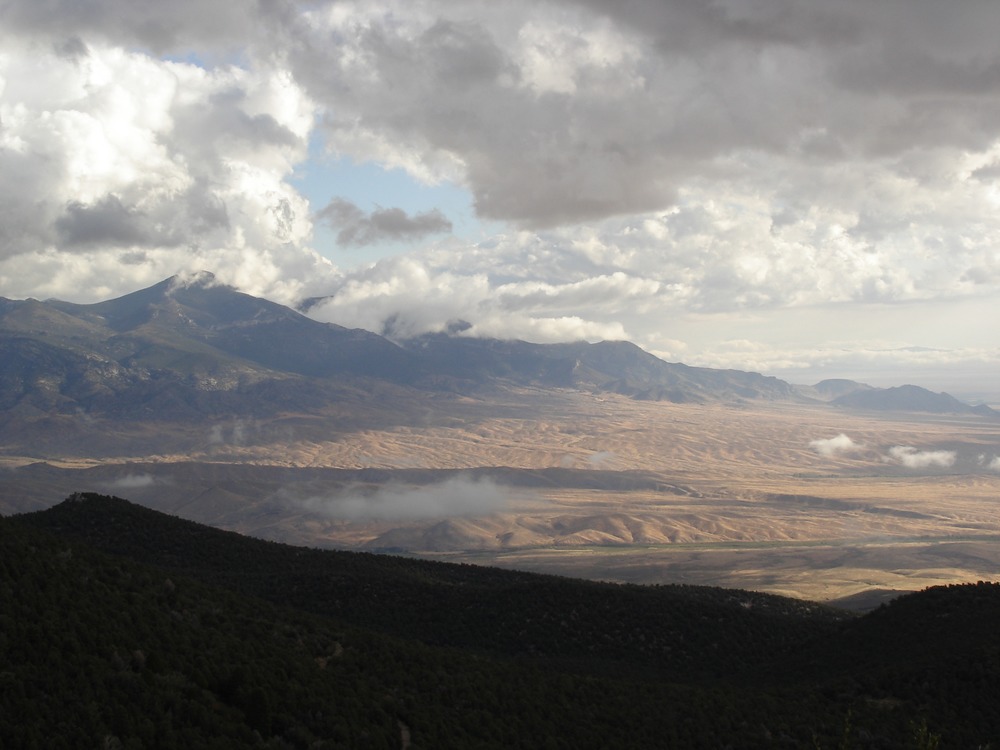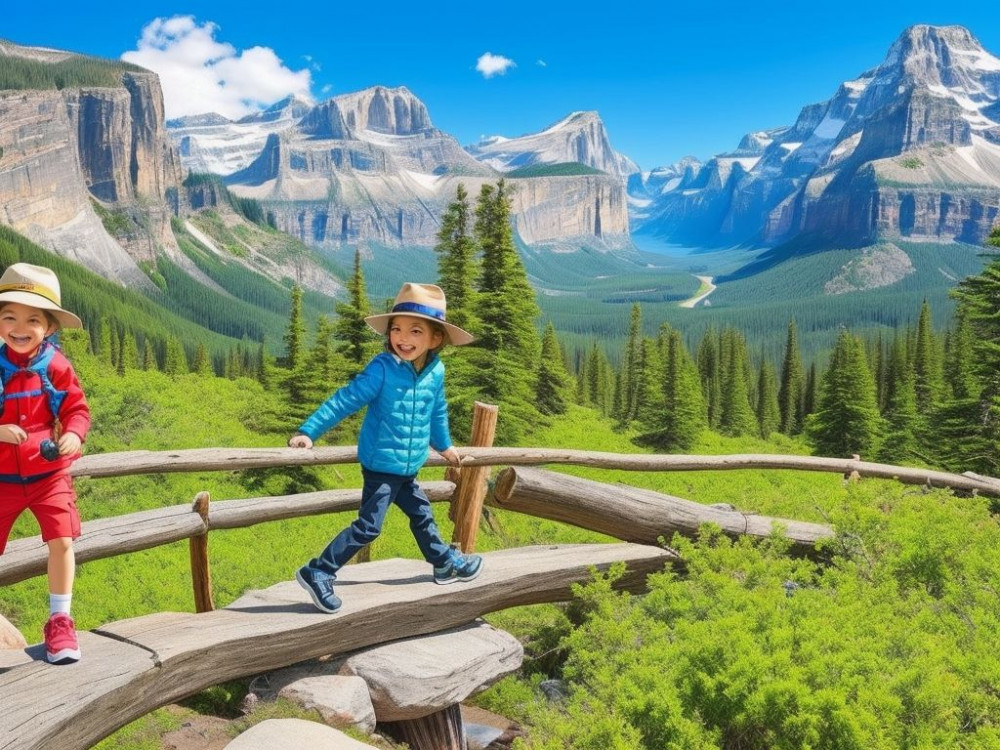Escape to a tranquil paradise? Great Basin National Park is the perfect retreat! Enjoy its untouched beauty and serenity. Discover its wondrous caves, ancient bristlecone pine forests, and majestic mountain peaks! Centuries of unchanged scenery is waiting for you to explore!
Introduction
Great Basin National Park is a secret gem in the middle of the western US. It’s a mix of natural beauty, history, and outdoor activities. There are diverse ecosystems and gorgeous landscapes. For nature-lovers and adventurers, it’s a must-visit!
The rugged Nevada mountains house Great Basin. Alpine lakes, old bristlecone pine forests, and tall peaks will leave you amazed. Wheeler Peak stands 13,063 feet tall and offers hikers the best views of the desert. Trails for all levels – no matter your experience.
The park has one special feature – its network of underground caves. Lehman Caves are in the park – explore the limestone formations and learn about its history. Guided tours are available for those who want to explore more.
Pro tip: Bring warm clothes, even in summer! Temperatures can drop at higher elevations.
Location and History
Discover Great Basin National Park! Located in eastern Nevada, it was established in 1986 to protect the special landscape of the Great Basin region. Spanning over 77,000 acres, explore its pristine mountain peaks, ancient bristlecone pine forests, and intricate cave systems.
This area has been home for thousands of years. Native American tribes, such as the Shoshone and Paiute, lived off the land and had a close connection to nature. In the mid-1800s, Europeans were attracted to the area due to reports of gold and silver.
Within the park, visit Lehman Caves, discovered in 1885 by Absalom Lehman. Marvel at its limestone formations and unique geological features. Additionally, traverse the many hiking trails going through alpine meadows and dense forests for picturesque views of snow-capped peaks.
Also, Wheeler Peak stands tall at 13,063 feet. This makes it the second-highest peak in Nevada after Boundary Peak. Come to Great Basin National Park for a one-of-a-kind experience!
Geography
Great Basin National Park is found in the middle of the Great Basin, a huge region that covers most of Nevada and pieces of Utah, Idaho, and California. This park has an extraordinary landscape with varied geography and features.
Look at the table for the main geographical pieces of Great Basin National Park:
Terrain and Climate
| Terrain | Elevation Range | Climate |
|---|---|---|
| Mountains | 5,000 to 13,063 feet | Alpine |
| Valleys | Varies | Desert/Mountain |
| Caves | Varies | Cool/Damp |
| Streams | Varies | Spring-fed |
Besides these primary characteristics, the park also holds the well-known Lehman Caves, which are acclaimed for their magnificent formations. The Wheeler Peak, towering at 13,063 feet, offers remarkable sights and draws in enthusiastic hikers and climbers.
In the past, Great Basin National Park was the home of Native American tribes who lived in this region for thousands of years. European settlers began exploring the area in the mid-19th century during the westward movement. Now, it’s a reminder of both nature’s beauty and cultural heritage.
So when you look around Great Basin National Park, take a second to appreciate its geographical wonders and strong history. Climate can be strange here, moments of sweat and others of shivering, but hey, it keeps things interesting in Great Basin National Park!
Climate
The weather in Great Basin National Park is intense. In summer, temperatures soar up to 100°F! In winter, they plunge to a freezing chill. This hostile climate has adapted flora and fauna to survive. You’ll find resilient sagebrush and delicate wildflowers in this park.
Great Basin is also special for its dark sky. Due to its remote location, there’s hardly any light pollution. It’s the perfect spot to stargaze and witness constellations, shooting stars, and even the Milky Way!
Don’t miss out on a one-of-a-kind experience! Discover the rugged terrain, diverse plants, and amazing night sky. Plan your visit now and explore a world like no other. Appreciate the beauty of death in this unique park.
Flora and Fauna
The captivating natural beauty and ecological significance of Great Basin National Park are enhanced by the diverse flora and fauna within its borders. These plants and animals all play vital roles in maintaining the balance of this unique ecosystem.
The park boasts an impressive array of species, from sagebrush and juniper trees to wildflowers like lupine and Indian paintbrush. Plus, numerous wildlife species, such as mule deer, elk, mountain lions, and bighorn sheep, reside here. The avian population is equally enchanting with golden eagles and melodious western meadowlarks.
Reptiles and amphibians also inhabit this area – snakes like rattlesnakes can be seen slithering among the rocks, while vivacious lizards, like horned lizards, bask in the sun. Burrowing into sandy soil are fascinating creatures such as desert tortoises.
This rich history of flora and fauna traces back millions of years to when the region was submerged under ancient lakes. As these lakes receded, life began to evolve in this arid landscape. The park provides a sanctuary for the countless organisms that have called it home over the years.
Forget the city – take a trip to Great Basin National Park and explore an ecosystem where the only traffic jam is deer crossing the road!
Ecosystem
The Great Basin National Park is home to a diverse and thriving ecosystem. A unique environment full of plants, animals, and natural resources that all play a vital role in maintaining balance. Let’s uncover some fascinating details!
Ecosystem Elements:
1. Vegetation: Sagebrush, pinyon pine, bristlecone pine
2. Wildlife: Bighorn sheep, mule deer, mountain lion
3. Aquatic Life: Lahontan cutthroat trout
4. Climate: Arid with hot summers and cold winters
5. Natural Features: Lehman Caves, Wheeler Peak
Now for the lesser known parts. The range of plant species provide habitat for a range of animals, creating a delicate web of life. To preserve this, it’s important to implement conservation measures, research, and monitoring, as well as educate visitors about the significance.
By appreciating and safeguarding the intricate relationships within the Great Basin National Park’s ecosystem, we can actively contribute to the preservation of this remarkable natural heritage. Conservation is like 50 shades of green at this park – where Mother Nature keeps her secrets hidden…and her bears!
Conservation
At Great Basin National Park, conservation is key to preserving its ecosystems, wildlife habitats, and natural resources. Regulations are in place to limit human impact and promote responsible tourism. Conservation includes the protection of endemic plant and animal species. Water resources are managed and monitored to ensure availability and quality for wildlife and visitors. Research projects help identify potential threats and guide effective conservation strategies. To support these efforts, visitors must follow Leave No Trace principles. Let’s all do our part and preserve this amazing treasure for future generations.
Recreation
Recreation is a must when visiting this picturesque destination. Let’s explore some of the unique activities Great Basin National Park has to offer!
- Wildlife Viewing: Spot mule deer, elk, bighorn sheep, and many bird species in their natural habitat.
- Hiking: Trek through stunning mountains, caves, and alpine lakes on trails for all skill levels.
- Camping: Sleep under a starlit sky with awe-inspiring landscapes all around.
- Stargazing: Catch a glimpse of the universe and breathtaking celestial displays in the park’s remote location with minimal light pollution.
- Ranger-led Programs: Gain valuable insights into the park’s rich history and significance with interactive sessions led by knowledgeable rangers.
Don’t miss out on exploring Lehman Caves! This underground marvel showcases intricate limestone formations, offering an unforgettable experience.
To make the most of your visit, keep these tips in mind:
- Plan Ahead: Research and prepare before your trip with all the necessary equipment and permits.
- Stay Hydrated: The high altitude increases dehydration risks so bring an ample supply of water.
- Dress Appropriately: Weather can change quickly, so wear layers and sturdy footwear.
- Respect Wildlife: Maintain a safe distance and don’t feed them.
- Leave No Trace: Follow guidelines for waste disposal and leave natural objects untouched.
Follow these tips and get ready to have your mind blown with the recreational offerings of Great Basin National Park!
Tourism
Discover Nevada’s hidden gem, Great Basin National Park. From alpine forests to Wheeler Peak, the highest point in Nevada, this playground of nature offers awe-inspiring sights.
Hike the Bristlecone Trail and marvel at ancient trees. As night falls, be mesmerized by the park’s renowned stargazing opportunities. Explore Lehman Caves, adorned with limestone formations.
Great Basin National Park is also a sanctuary for rare and endangered species, making it a hub for conservation efforts. So go ahead and explore – create memories that last a lifetime! Pack your bags and embark on an unforgettable journey into nature’s embrace. Immerse yourself in the wonders of Great Basin National Park today!
Future
The future of Great Basin National Park is looking bright! With its beautiful scenery and diverse ecosystems, the park is sure to be a hit with nature-lovers and eco-tourists.
Conservation efforts are on the rise, which will help protect and restore the park’s delicate environment. This includes preserving species, keeping air and water clean, and promoting sustainable tourism.
Technology is also making it possible for visitors to explore the park in new ways. Interactive digital tools and virtual reality simulations will give visitors a more exciting and immersive experience.
Educational programs will help people learn about the park’s importance and how to protect it. People of all ages can take part in hands-on activities and guided hikes.
Let’s take a look back: In 1922, President Warren G. Harding declared Lehman Caves National Monument, which is now part of Great Basin National Park. This was a big step towards making it one of America’s treasured parks!
FAQ
What is Great Basin National Park?
Great Basin National Park is a stunning national park located in eastern Nevada, USA. It encompasses more than 77,000 acres of diverse landscapes, including mountains, lakes, caves, and ancient bristlecone pine groves.
How do I get to Great Basin National Park?
You can reach Great Basin National Park by car or by taking a commercial flight to the nearest airport in Elko, Nevada. The park is located off Nevada State Route 488, approximately 4 hours northeast of Las Vegas.
What are the main attractions in Great Basin National Park?
Great Basin National Park offers several breathtaking attractions, including the Lehman Caves, Wheeler Peak, and the magnificent bristlecone pine trees, some of the oldest living organisms on Earth. The park also boasts numerous hiking trails, camping grounds, and stargazing opportunities.
Are pets allowed in Great Basin National Park?
Pets are allowed in certain areas of Great Basin National Park, such as campgrounds and picnic areas, but they must be leashed at all times. They are not permitted on trails or in visitor centers to protect the park’s wildlife and ecosystems.
What activities can I do in Great Basin National Park?
Visitors can engage in various activities at Great Basin National Park, including hiking, camping, fishing, wildlife watching, and stargazing. The park also organizes ranger-led programs and offers educational exhibits for a more immersive experience.
When is the best time to visit Great Basin National Park?
The best time to visit Great Basin National Park is during the summer months (June to August) when the weather is pleasant and most of the park’s facilities are open. However, spring and fall offer milder temperatures and stunning foliage, making them great alternatives.




Leave a Reply